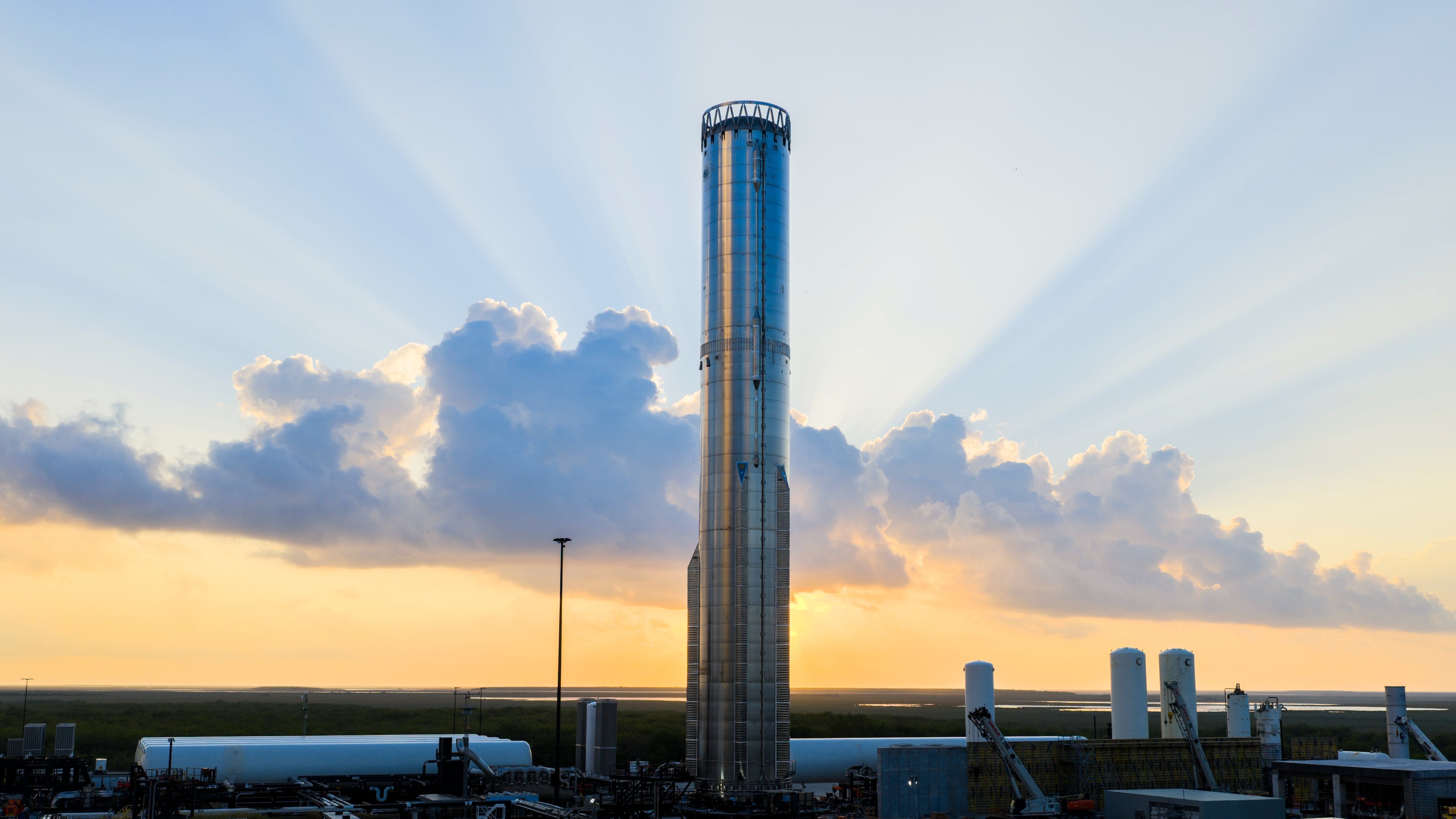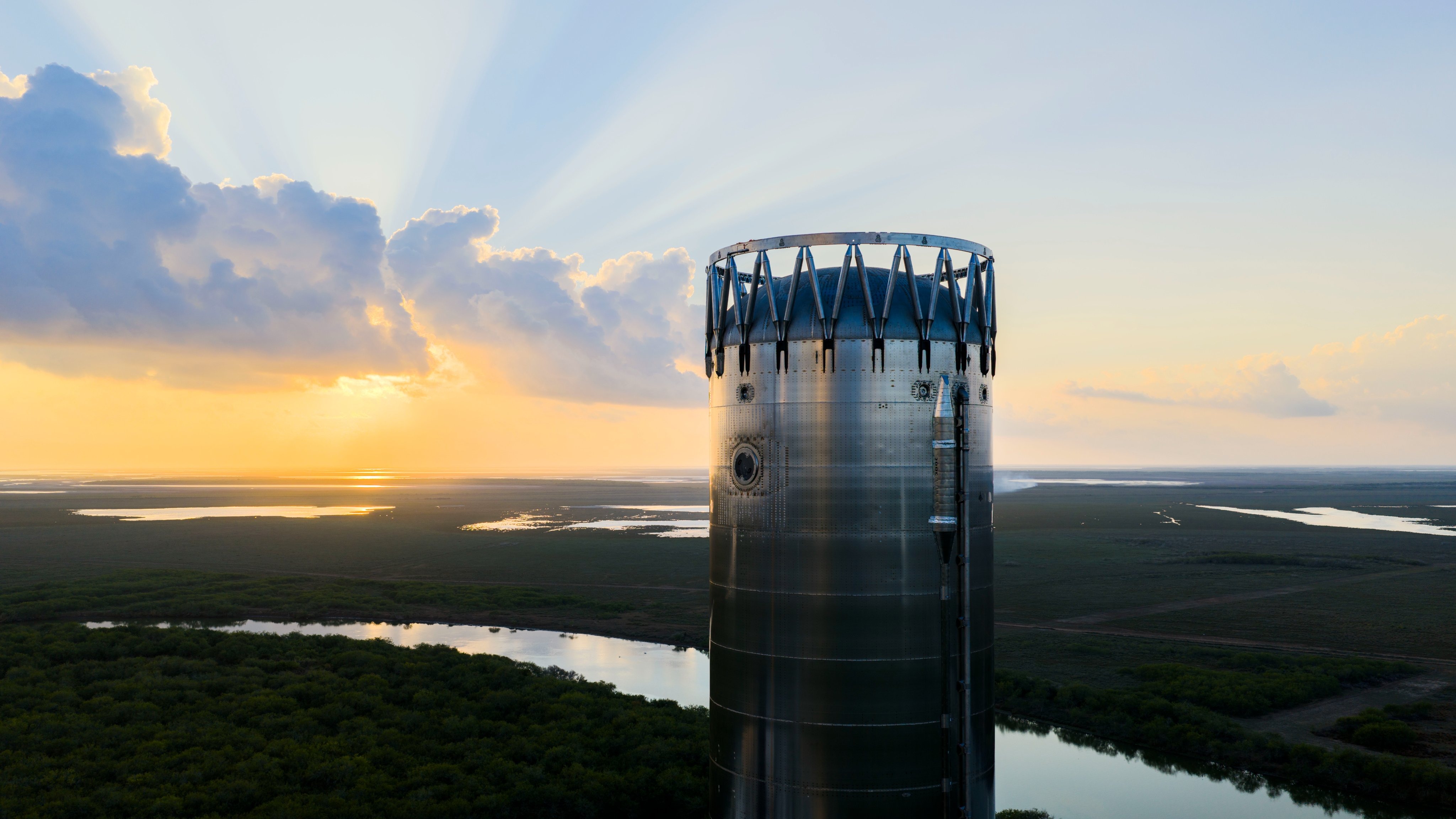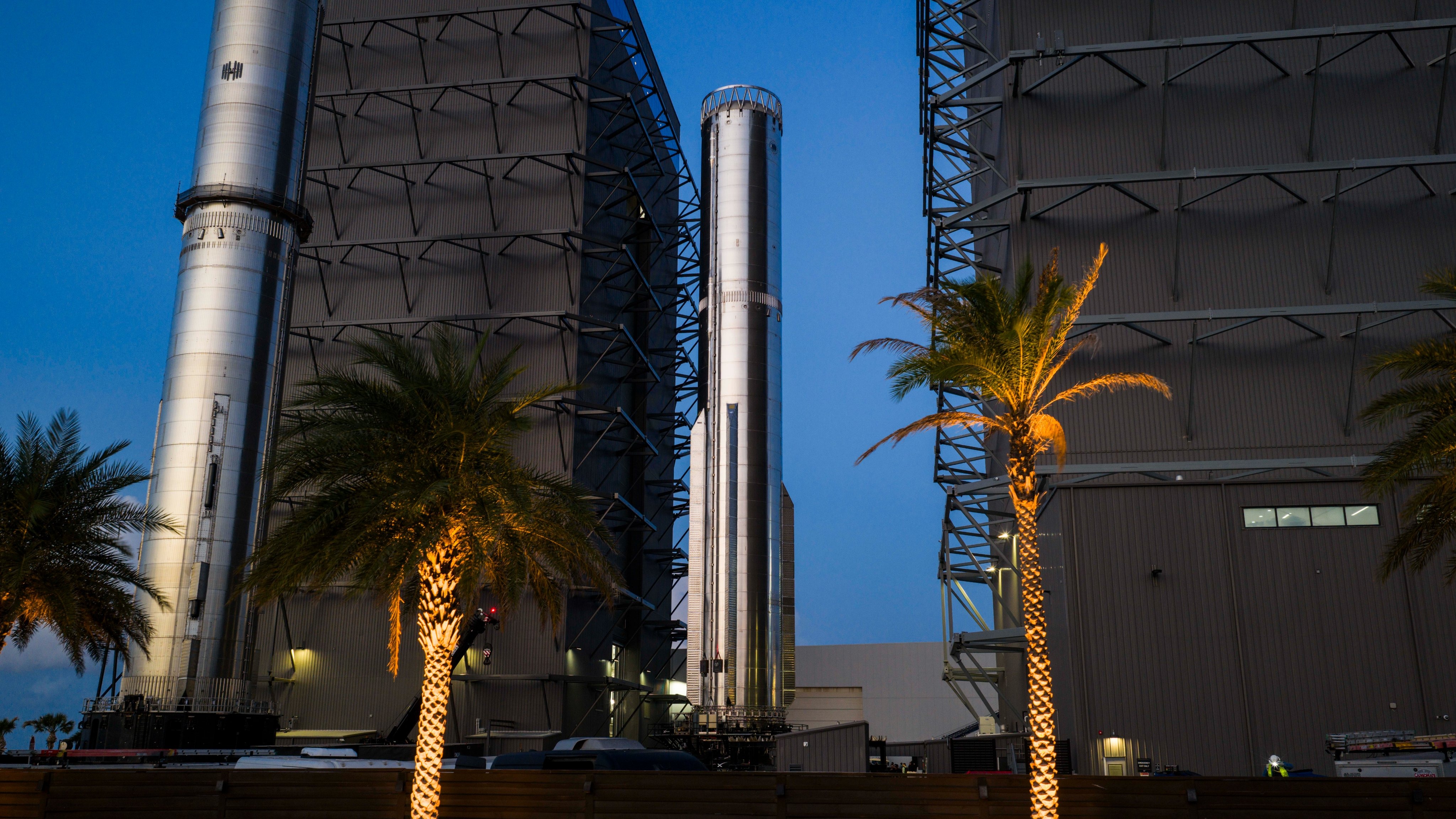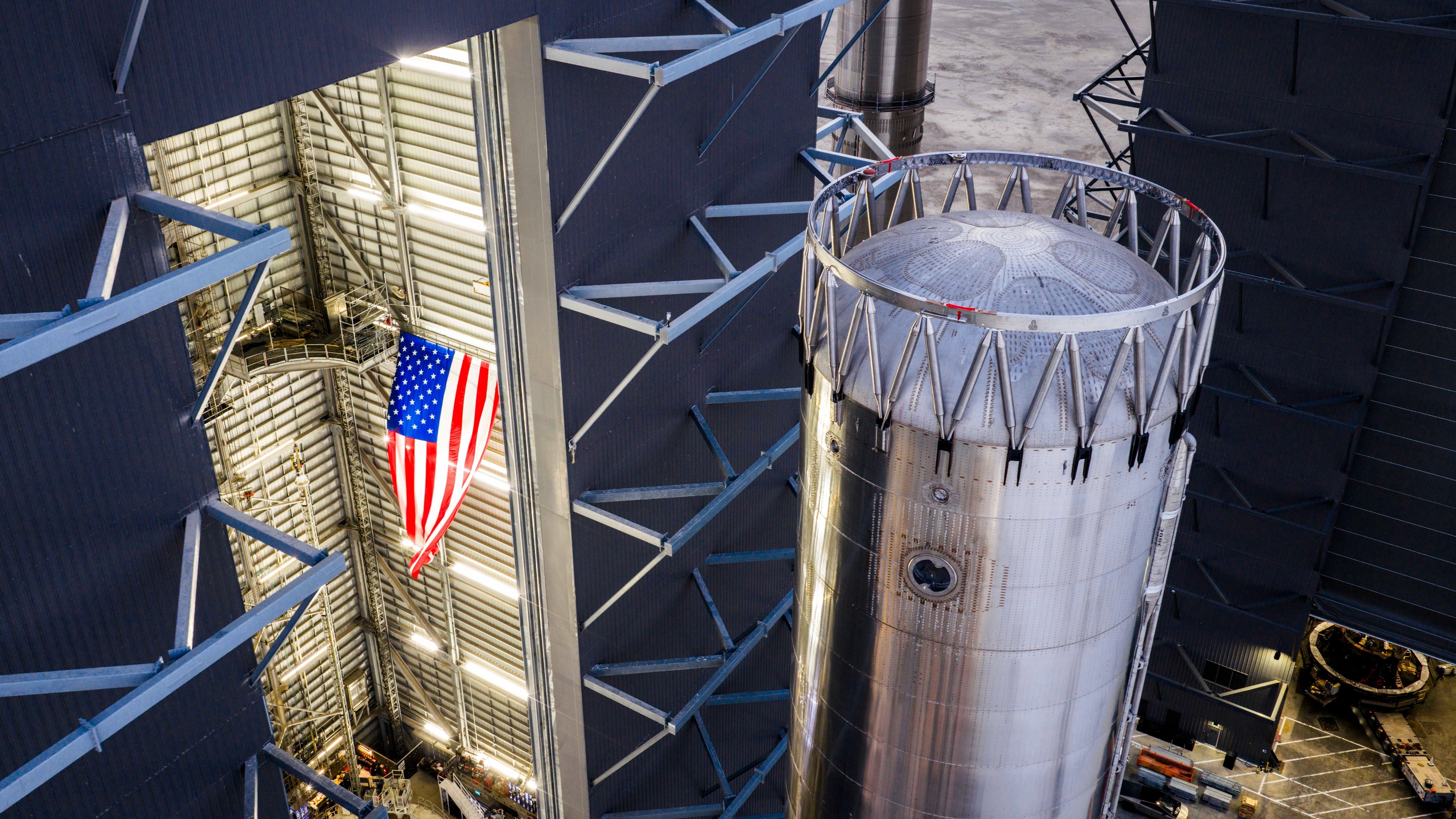SpaceX's 1st 'Version 3' Super Heavy Starship booster buckles under pressure during initial tests
Looks like Starship V3 might need a little more work before launching to space.

More testing will be needed before SpaceX's newest version of Starship gets off the ground.
On Thursday (Nov. 20), SpaceX rolled out Booster 18, the first stage of the company's first "Version 3" Starship megarocket, to begin its first round of tests ahead of the vehicle's next flight test. V3 will take the torch from Starship V2, which wrapped up a year of growing pains with two consecutive test-flight successes, in August and October of this year.
Now, it seems, V3 will have some growing pains of its own. SpaceX announced that tests on the new booster would begin at the company's Starbase facility in South Texas in a Nov. 20 post on X. "The first operations will test the booster's redesigned propellant systems and its structural strength," the company said. But by Friday morning (Nov. 21), the booster sported signs of serious damage.
In a post on X Friday morning, a user by the name of Starship Gazer, whose profile describes nearly half a decade of documenting Starship's development, posted an image of Booster 18 with much of the bottom portion of the vehicle crumpled like an empty soda can.
It appears in the photo that whatever propulsion and structural integrity tests SpaceX performed overnight did their job, and found some faults in the stainless-steel vehicle.
"Very significant damage to the entire LOX [liquid oxygen] tank section," Starship Gazer said in the post.
It's still too early to know what exactly went wrong, according to SpaceX.
Breaking space news, the latest updates on rocket launches, skywatching events and more!
"Booster 18 suffered an anomaly during gas system pressure testing that we were conducting in advance of structural proof testing. No propellant was on the vehicle, and engines were not yet installed. The teams need time to investigate before we are confident of the cause. No one was injured as we maintain a safe distance for personnel during this type of testing. The site remains clear and we are working plans to safely reenter the site," the company wrote on X on Friday.
A full view of super heavy booster 18's catastrophic damage during testing tonight. Very significant damage to the entire LOX tank section.11/21/25 pic.twitter.com/Kw8XeZ2qXWNovember 21, 2025
Visually, Starships V2 and V3 appear very similar. V3 stands a bit taller, though — about 5 feet (1.5 meters) taller than V2 — and also features an integrated "hot stage" ring, the structure that connects Starship's two stages. (V2's hot stage ring was a separate component that fell from both Starship stages after separation.) The new booster has also been overhauled to fly under the power of SpaceX's upgraded Raptor 3 engines. Additionally, V3 boosters will sport only 3, instead of 4, grid fins for aerodynamic descent stability control, each of which will be about 50% larger than their V2 counterparts.
The latest mishap stands to slow SpaceX's gained momentum after a rocky year of test flights for Starship V2. That rocket launched five times in 2025, but only managed to reach its mission goals during the last two.
SpaceX did succeed in catching returning Super Heavy boosters back at the launch pad during the first two Starship flights of the year, using the tower's "Mechazilla" chopstick-like mechanical arms. The company then managed to relaunch one of those boosters on a subsequent flight in May. And, while the third Starship launch of 2025 resulted in the loss of both Super Heavy and Ship (the vehicle's upper stage), its final two flights of the year were deemed complete successes; with Ship's deployment of a set of Starlink satellite mass-simulator payloads, safe reentry through Earth's atmosphere and soft splashdown of both stages at their respective target zones at sea.
Recent successes notwithstanding, Starship's setbacks in the first half of the year, and now this new incident with V3 before it even gets off the ground, raise some questions about the spacecraft's readiness for SpaceX's biggest current customer.




NASA has contracted SpaceX to use Starship as the lunar lander for the agency's Artemis 3 mission, which will return astronauts to the surface of the moon for the first time sinc 1972. NASA is targeting 2027 for that mission, but recent reports on internal SpaceX timelines push those estimates to no earlier than 2028.
How the failure of Booster 18 will affect that timeline, and what it means for the V3 booster design as a whole, is yet to be seen, but NASA may not be waiting around to find out. Even before V3 rolled out for testing, the space agency had begun eyeing other moon lander options in light of SpaceX's delayed progress in developing Starship.
Starship was also recently criticized by former NASA Administrator Jim Bridenstine, during a Sept. 3 Senate Commerce Committee hearing led by Sen. Ted Cruz (R-Texas), and titled "There’s a Bad Moon on the Rise." In his remarks, Bridenstine criticized Starship's design architecture and stressed the number of milestones it still needs to achieve before being qualified to land humans on the moon.
For example, before flying any Artemis astronauts, SpaceX still must demonstrate in-orbit cryogenic fuel transfer between Ship upper stages vehicles and land at least one uncrewed Ship on the moon. One of Bridenstine's harshest criticisms focused on what SpaceX estimates it will take to accomplish those feats. After launching the Starship lunar lander to Earth orbit, it could take a dozen or so additional Starship launches to supply the lander with enough fuel to make the journey. (The exact number is a matter of debate, as SpaceX and NASA have made different estimates.)
Now, those goal posts will sit on the back burner as SpaceX determines how best to fuel its V3 booster on the ground without buckling under the pressure.

Josh Dinner is the Staff Writer for Spaceflight at Space.com. He is a writer and photographer with a passion for science and space exploration, and has been working the space beat since 2016. Josh has covered the evolution of NASA's commercial spaceflight partnerships and crewed missions from the Space Coast, as well as NASA science missions and more. He also enjoys building 1:144-scale model rockets and human-flown spacecraft. Find some of Josh's launch photography on Instagram and his website, and follow him on X, where he mostly posts in haiku.
You must confirm your public display name before commenting
Please logout and then login again, you will then be prompted to enter your display name.
